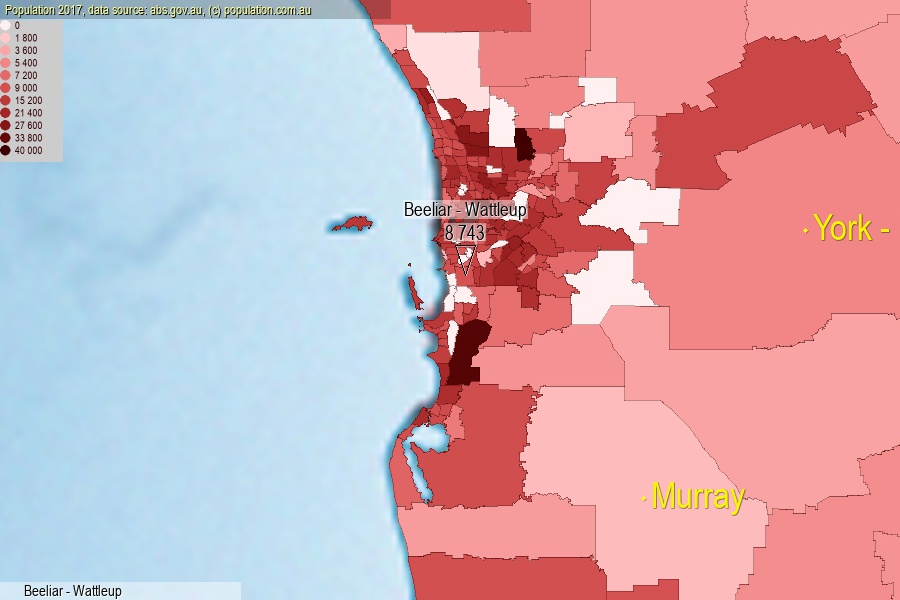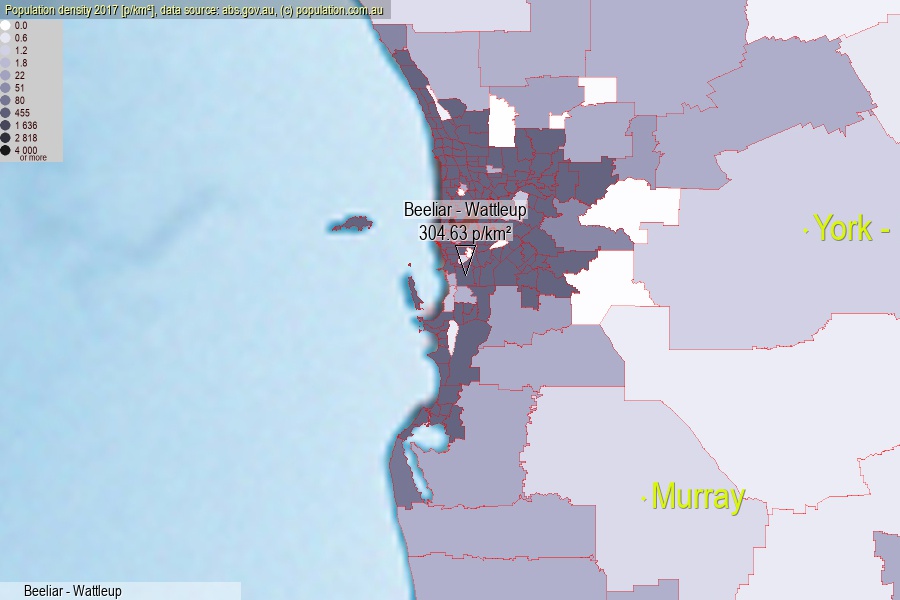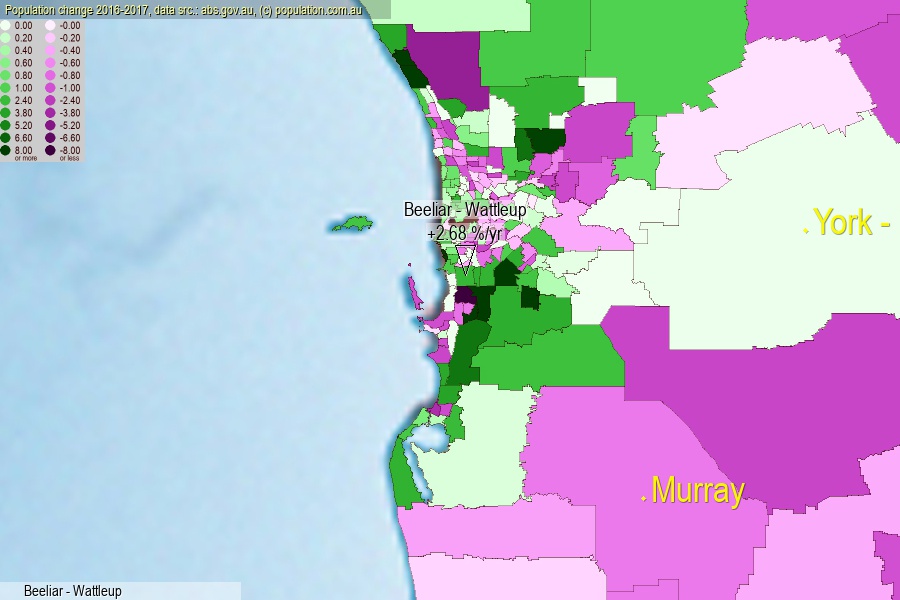 population.com.au
population.com.auLast official estimated population of Beeliar - Wattleup (as Statistical Area Level 2) was 8 743 people (on 2017-06-30)[2]. This was 0.04% of total Australian population and 0.337% of WA population. Area of Beeliar - Wattleup is 28.70 km², in this year population density was 304.63 p/km² . If population growth rate would be same as in period 2016-2017 (+2.68%/yr), Beeliar - Wattleup population in 2025 would be 10 801. [0]



Click to enlarge. Beeliar - Wattleup is located in the center of the images.
Population [people], population density [p./km²] and population change [%/year] [2]
View borders » (new window) [4]
[2001-2002] +3.98 %/Yr.
[2002-2003] -0.02 %/Yr.
[2003-2004] +4.02 %/Yr.
[2004-2005] +5.92 %/Yr.
[2005-2006] +6.07 %/Yr.
[2006-2007] +7.11 %/Yr.
[2007-2008] +3.73 %/Yr.
[2008-2009] +4.12 %/Yr.
[2009-2010] +4.05 %/Yr.
[2010-2011] +4.70 %/Yr.
[2011-2012] +6.58 %/Yr.
[2012-2013] +6.24 %/Yr.
[2013-2014] +2.57 %/Yr.
[2014-2015] +3.06 %/Yr.
[2015-2016] +2.62 %/Yr.
[2016-2017] +2.68 %/Yr.
[0] Calculated with linear interpolation from officially estimated population
[1] Read more about SA2 and Australian Statistical Geography Standard (ASGS) on abs.gov.au
[2] Population data from Australian Bureau of Statistics (Population and density: 2017; change: 2016-2017)
[3] Digital Boundaries: Australian Statistical Geography Standard (ASGS) 2016.
[4] Border coordinates are simplifyed using Ramer-Douglas-Peucker algorithm.